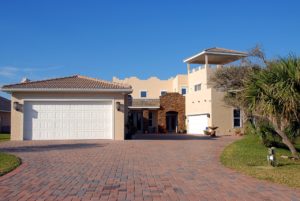When shopping for a mortgage, it is important to know what the different options are and what the implications of each are for the future. The following is an overview of the major different types of mortgage and what each means for the borrower:
Conventional vs. Government-Backed Loans
 Loans that are not insured by the government are referred to as conventional loans, while loans that the government guarantees are called nonconventional loans. Not everyone qualifies for a government-backed loan, but borrowers who get this type of mortgage can reap some significant benefits. However, several types of government-backed loans exist.
Loans that are not insured by the government are referred to as conventional loans, while loans that the government guarantees are called nonconventional loans. Not everyone qualifies for a government-backed loan, but borrowers who get this type of mortgage can reap some significant benefits. However, several types of government-backed loans exist.
USDA Loans—Some loans for purchases in rural areas are backed by the United States Department of Agriculture. To qualify, individuals must have low or moderate incomes, and borrowers can use these loans to purchase, repair, or even renovate homes in rural areas, although a handful of suburban districts can also qualify. With a USDA loan, individuals can purchase a home with no down payment and lock in below-market interest rates.
VA Loans—Veterans, military families, and active members of the military can obtain a Veterans Administration loan, which requires no money down. VA borrowers are also typically exempt from mortgage insurance. For people who qualify, these loans top most other options in terms of value.
FHA Loans—The Federal Housing Administration also insures loans. First-time homebuyers and borrowers with little savings and/or poor credit can benefit from FHA loans as long as they have a credit score of 580 or higher and a 3.5-percent down payment. However, people with credit scores as low as 500 can qualify if they can afford a larger down payment.
Fixed-Rate vs. Adjustable-Rate Mortgages
Mortgages can come with different types of interest rates. The most traditional option is a fixed-rate mortgage, which the borrower pays off in a designated amount of time at a locked-in interest rate. Although shorter-term mortgages often have lower interest rates, most people opt for a 30-year mortgage. With this option, the interest rate remains constant for 30 years, which gives people greater financial security. Individuals can always refinance if interest rates drop substantially. However, they do not have to worry about rates increasing.
 With an adjustable-rate mortgage (ARM), the interest rate changes over time. Typically, the rate starts lower than it does with a fixed-rate mortgage, but there is no guarantee that it will stay low for long. The interest rate does not change haphazardly. Rather, it is tied to an indexed rate with minimum and maximum caps. People often choose this option if they are not planning to stay in a home for a long time so that they can capitalize on less expensive initial rates. Also, people can typically qualify for higher loan amounts with an ARM.
With an adjustable-rate mortgage (ARM), the interest rate changes over time. Typically, the rate starts lower than it does with a fixed-rate mortgage, but there is no guarantee that it will stay low for long. The interest rate does not change haphazardly. Rather, it is tied to an indexed rate with minimum and maximum caps. People often choose this option if they are not planning to stay in a home for a long time so that they can capitalize on less expensive initial rates. Also, people can typically qualify for higher loan amounts with an ARM.
However, individuals planning to stay in a home for a while need to plan for the worst and save money to cover additional expenses caused by future rate hikes. Before signing on the dotted line, individuals should ask how often the rate adjusts and verify the upper limits of any adjustment to make sure that the highest payment would still be affordable. Some people assume that they will simply refinance when the rate starts to increase, but this is a big risk.
Different types of ARMs exist. The rate may be set for a period of three, five, seven, or even 10 years before the rate begins to adjust. Typically, an adjustment is made on an annual basis, although some loans have adjustments every three years. Sometimes, people can find two-step mortgages, which are a special type of ARM. With this loan, the interest remains the same for one interval and then changes at another interval. For example, the rate is set for five years and then it adjusts once to cover the next 25 years. Some loans even allow borrowers to switch between fixed and variable rates at the designated adjustment time.
Jumbo Mortgages vs. Conforming Mortgages
Another major difference between loans is whether they are conforming or jumbo. A conforming loan follows the conforming guidelines set by Freddie Mac and Fannie Mae pertaining to minimum asset, income, and credit requirements for approving certain loan amounts. Around most of the country, loans cannot exceed $417,000. However, certain high-priced markets allow for loans as high as $938,250.
If a loan exceeds the maximums set by Fannie Mae and Freddie Mac, then is called a jumbo, or non-conforming, loan. For people who can actually afford the loan payments, a jumbo loan can allow individuals to purchase a much more expensive property than they could buy with a conforming loan.
Jumbo loans offer significantly more flexibility than conforming loans do. For example, borrowers may be able to get around mortgage insurance requirements even when their down payment is smaller than 20 percent. At the same time, jumbo loans represent higher risk for the lender, so they typically come with higher interest rates. Also, lenders will typically only issue jumbo loans if borrowers have very large down payments and excellent credit.

